HOMEOPATHICS FOR PETS
We all love our boxers and other pets and most of us depend on our veterinarians to give us sound advice to assist with health issues, both acute and chronic. We would give our right arm to see them healed. This article is not meant to impugn the integrity of allopathically-trained health professionals, for they work with what they have learned and can certainly turn a crisis around quickly. They are in the business to heal and their services are valuable. But how can we use holistic knowledge to augment or even replace traditional treatments that may not be effective? How can we give our beautiful boxers, other family members the best quality of life along with the potential for increased longevity?
There are six basic classes of holistic supports that often can be used by the lay person at home, typically at very low cost, and often with miraculous results. Knowledge of these methods and judicious consultation with holistic health professionals can sometimes save a caregiver thousands of dollars in traditional treatments and get directly to the core imbalances and fix them – for good in some cases. The first two, Homeopathics and Flower Essences, are completely nature-based, non-toxic and free of noxious chemical substances, and great for beginners seeking natural means to reduce suffering and provide significant healing support to themselves and their pets. They can be used alongside any form of medication without any risk of adverse reactions, and choosing the incorrect remedy does not cause damage. These are great learning tools for anyone in safe alternatives to traditional treatments because you can try another remedy if the first one is ineffective.
This issue addresses one of my favorites – homeopathics.
Homeopathics – The alternative medical system of homeopathy was developed in Germany at the end of the 18th century by a brilliant MD. Homeopathic remedies are derived from substances that come from plants, minerals, or animals, such as red onion, arnica (mountain herb), crushed whole bees, white arsenic, poison ivy, belladonna (deadly nightshade), and stinging nettle. The original substance is diluted down to the “energy version”, thus turning it from toxin into healer. The symptoms caused by the original substance are reversed by the homeopathic version of the same substance – thus, the phrase “like cures like” has evolved. Homeopathic remedies are often formulated as sugar pellets to be placed under the tongue; they may also be in other forms, such as liquids, ointments, gels, drops, creams, and tablets.
There are six basic classes of holistic supports that often can be used by the lay person at home, typically at very low cost, and often with miraculous results. Knowledge of these methods and judicious consultation with holistic health professionals can sometimes save a caregiver thousands of dollars in traditional treatments and get directly to the core imbalances and fix them – for good in some cases. The first two, Homeopathics and Flower Essences, are completely nature-based, non-toxic and free of noxious chemical substances, and great for beginners seeking natural means to reduce suffering and provide significant healing support to themselves and their pets. They can be used alongside any form of medication without any risk of adverse reactions, and choosing the incorrect remedy does not cause damage. These are great learning tools for anyone in safe alternatives to traditional treatments because you can try another remedy if the first one is ineffective.
This issue addresses one of my favorites – homeopathics.
Homeopathics – The alternative medical system of homeopathy was developed in Germany at the end of the 18th century by a brilliant MD. Homeopathic remedies are derived from substances that come from plants, minerals, or animals, such as red onion, arnica (mountain herb), crushed whole bees, white arsenic, poison ivy, belladonna (deadly nightshade), and stinging nettle. The original substance is diluted down to the “energy version”, thus turning it from toxin into healer. The symptoms caused by the original substance are reversed by the homeopathic version of the same substance – thus, the phrase “like cures like” has evolved. Homeopathic remedies are often formulated as sugar pellets to be placed under the tongue; they may also be in other forms, such as liquids, ointments, gels, drops, creams, and tablets.
Drosera in its natural state can cause coughing
and is therefore often very helpful for animals with the symptoms of kennel cough
The liquid form is typically easier to dose when animals are coughing
and is therefore often very helpful for animals with the symptoms of kennel cough
The liquid form is typically easier to dose when animals are coughing
The history of Homeopathics - Founded and proved by German Dr. Samuel Hahnemann in the late 1700’s, homeopathic medicine ushered in a gentle and effective method of curing illness during times when practicing physicians were using crude and harsh methods such as strong chemicals in an attempt to purge the body of supposed poisons, bloodletting to rid the body of supposed excesses of blood, etc. A poor, but brilliant student who was tutoring fellow students in Greek and Latin by the age of twelve, Hahnemann received his medical degree but was unable to find effective ways to ease the suffering of his own children with the treatments taught to him. Dr. Hahnemann established a scientific method of ascertaining and proving the medicinal properties of various substances. He made the monumental discovery that substances that cause disastrous symptoms such as Bella Donna (causes coma, vomiting, diarrhea, and more) can actually reverse those symptoms when the original substance is highly diluted down to its energy form and administered, without the fear of the side effects commonly found with the use of pharmaceuticals. Thus, for example, the extremely diluted homeopathic Bella Donna has been known to reverse comas. This brought about the term that “like cures like”, meaning that a substance that causes symptoms in its natural form can reverse those symptoms in its energy form.
Homeopathy was widely adopted in the ensuing centuries with great success in many areas including in the face of serious outbreaks of cholera and yellow fever, but began a decline when health practitioners tried to use homeopathics in an allopathic manner – without proper case taking or individual prescribing – and they obtained poor results. The use of homeopathics in the United States virtually disappeared in the late nineteenth century largely due to misuse and the financial gains and growth afforded by the patent drug industry started by Eli Lilly company. Meanwhile, homeopathic use has continued to grow by leaps and bounds in many other countries such as the UK, France, Germany, the Netherlands, and many Latin American countries.
A resurgence of homeopathic medicine in the US occurred in the 1970s and currently is widely practiced throughout the world. Dr. Richard Pitcairn has been at the forefront of US-based veterinary homeopathy and has provided much of the training to North American veterinarians and individuals. For dogs who receive traditional vaccinations, homeopathic Thuja can be effective in reducing the negative effects of puppy and annual DHLPPC vaccines, also known as “vaccinosis”, and is a mainstay in home and veterinary homeopathic use.
Homeopathics are steeped in traditional healing for hundreds of years . However, it is not an old or rarely used healing method. A survey of French pharmacists was conducted in 2004 found that an astounding 94.5% reported advising pregnant women to use homeopathic remedies. 62% of French mothers use homeopathics as well. At least 25,000 French physicians prescribe homeopathic medicines for their patients. It is not only much more tried than modern allopathic remedies, but very current in the civilized world's medical communities.
How to use homeopathy at home – start with the understanding that homeopathics can be extremely effective when chosen correctly and in almost any potency, and will pass harmlessly through the body in almost all cases when an incorrect remedy is given. Lower potencies typically may need to be administered more often. Higher potencies may need to be given only once.
Homeopathy was widely adopted in the ensuing centuries with great success in many areas including in the face of serious outbreaks of cholera and yellow fever, but began a decline when health practitioners tried to use homeopathics in an allopathic manner – without proper case taking or individual prescribing – and they obtained poor results. The use of homeopathics in the United States virtually disappeared in the late nineteenth century largely due to misuse and the financial gains and growth afforded by the patent drug industry started by Eli Lilly company. Meanwhile, homeopathic use has continued to grow by leaps and bounds in many other countries such as the UK, France, Germany, the Netherlands, and many Latin American countries.
A resurgence of homeopathic medicine in the US occurred in the 1970s and currently is widely practiced throughout the world. Dr. Richard Pitcairn has been at the forefront of US-based veterinary homeopathy and has provided much of the training to North American veterinarians and individuals. For dogs who receive traditional vaccinations, homeopathic Thuja can be effective in reducing the negative effects of puppy and annual DHLPPC vaccines, also known as “vaccinosis”, and is a mainstay in home and veterinary homeopathic use.
Homeopathics are steeped in traditional healing for hundreds of years . However, it is not an old or rarely used healing method. A survey of French pharmacists was conducted in 2004 found that an astounding 94.5% reported advising pregnant women to use homeopathic remedies. 62% of French mothers use homeopathics as well. At least 25,000 French physicians prescribe homeopathic medicines for their patients. It is not only much more tried than modern allopathic remedies, but very current in the civilized world's medical communities.
How to use homeopathy at home – start with the understanding that homeopathics can be extremely effective when chosen correctly and in almost any potency, and will pass harmlessly through the body in almost all cases when an incorrect remedy is given. Lower potencies typically may need to be administered more often. Higher potencies may need to be given only once.
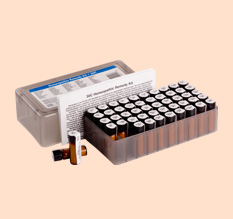
- Invest in a homeopathic remedy kit and learn to choose remedies. Choosing the correct remedy comes by having a variety to choose from. I recommend the purchase of a basic homeopathic kit of 50-100 of the most commonly used remedies. This is one of the most important investments that a person interested in holistic supports can make, and each remedy costs only a few dollars. Remedies are given in minute doses, and have the potential for permanent shelf-life if not exposed to strong odors, touched, or exposed to Electrical Magnetic Frequencies such as microwaves. Over time, you will learn to use most of them effectively for both acute and chronic situations.
- Take a course in using homeopathy at home or purchase one of the books referenced below.
- Learn to muscle test (use kinesiology) your box of remedies as well. Kinesiology allows you to access the body’s inner wisdom or intuition. You will often choose the correct remedy based on that wisdom and find that it is perfect for the situation.
- Consult a homeopathic practitioner. Most of them can consult by phone and help you to choose the correct remedy. This is especially useful when dealing with chronic health issues.
- Start by using homeopathic Arnica – one of the most widely used and effective remedies for generalized pain, bruising and inflammation. It is a “must have” in any first aid kit and can be administered orally or on the skin via gels and lotions. Try it on yourself the next time you run into a table corner and note the reduction in the bruising that you typically experience. You’ll be hooked! It’s great for sprains, bruises, and bitches in labor and post-whelping, and safe for nursing moms and infants.
UPDATE! WE'VE JUST LAUNCHED A HOMEOPATHIC SNAKE/VENOMOUS INSECT BITE KIT! If you live in an area where you or our pets are at risk of being bitten by venomous snakes or spiders, please check this out. We were able to save our dogs without a $4,000 anti-venom procedure with a few dollars worth of homeopathics. See this video for more information:
Watch for our next column on Flower Essences. You won't want to miss it!
HAPPY HOLISTIC HEALING!
HAPPY HOLISTIC HEALING!
Author: Paula Vandervoort; Gentry Boxers, Kindred Animal Spirits
Paula has been raising show/performance boxers for over four decades and currently lives with three conformation champions/service/performance boxers named Dash, Scotty and Ginger, plus a new show hopeful named Spice.
Professional Animal Communicator/Telepath/Energy Healer and Teacher
Professional Flower Essence Practitioner
Raw Feeder
Natural Rearing Breeder, member Natural Rearing Breeder Association
Contributor to The Dog Breeder Store – an online resource for breeders and owners
Alumnus AZ State University - Animal Science
References:
Homeopathic Care for Cats and Dogs – Don Hamilton, DVM
The Nature of Animal Healing, Martin Goldstein, DVM
Dr. Pitcairn’s Complete Guide to Natural Health for Dogs and Cats – Richard H. Pitcairn, DVM, PhD
Natural Immunity – Pat McKay
Natural Rearing Breeders Association
Dogs Naturally Magazine
Miracles in Healing Home Homeopathics Course by Dr. Will Falconer, Holistic DVM
Dr. Peter Dobias, Holistic DVM
Paula has been raising show/performance boxers for over four decades and currently lives with three conformation champions/service/performance boxers named Dash, Scotty and Ginger, plus a new show hopeful named Spice.
Professional Animal Communicator/Telepath/Energy Healer and Teacher
Professional Flower Essence Practitioner
Raw Feeder
Natural Rearing Breeder, member Natural Rearing Breeder Association
Contributor to The Dog Breeder Store – an online resource for breeders and owners
Alumnus AZ State University - Animal Science
References:
Homeopathic Care for Cats and Dogs – Don Hamilton, DVM
The Nature of Animal Healing, Martin Goldstein, DVM
Dr. Pitcairn’s Complete Guide to Natural Health for Dogs and Cats – Richard H. Pitcairn, DVM, PhD
Natural Immunity – Pat McKay
Natural Rearing Breeders Association
Dogs Naturally Magazine
Miracles in Healing Home Homeopathics Course by Dr. Will Falconer, Holistic DVM
Dr. Peter Dobias, Holistic DVM
“Everything is energy and that is all there is to it. Match the frequency of the reality you want and you cannot help but get that reality. There is no other way. This is not philosophy. This is physics.”
Albert Einstein
Albert Einstein

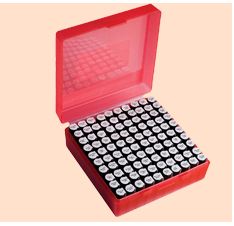
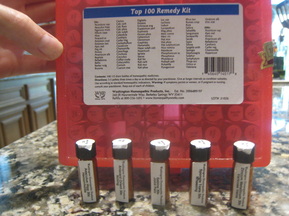



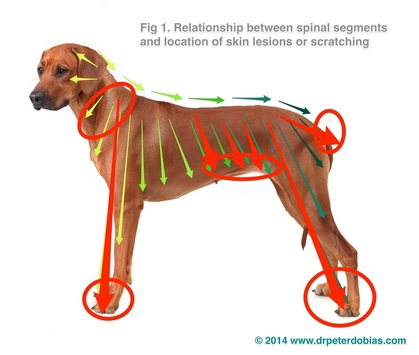
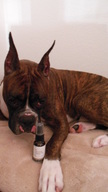
 RSS Feed
RSS Feed
